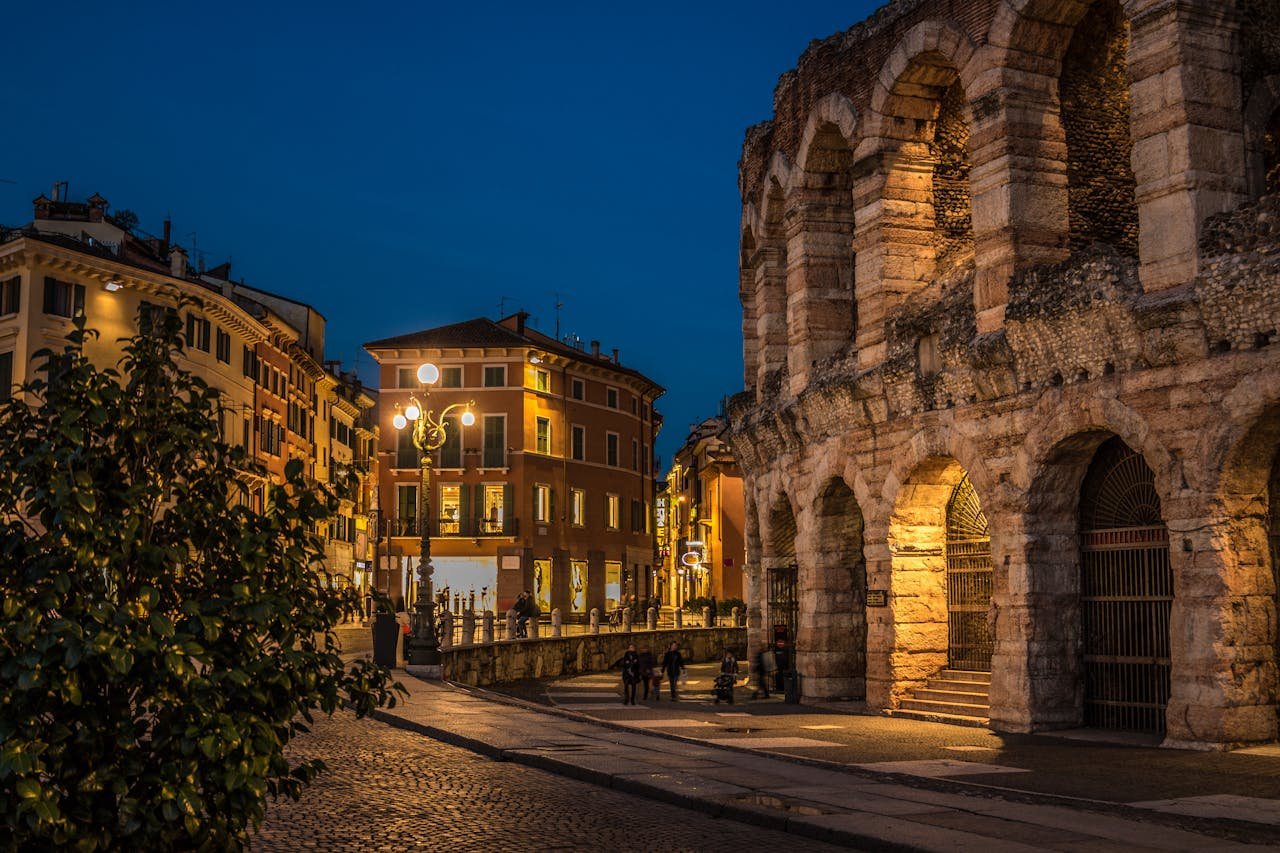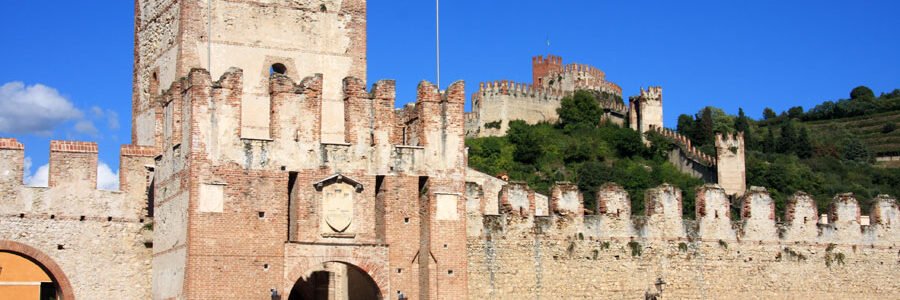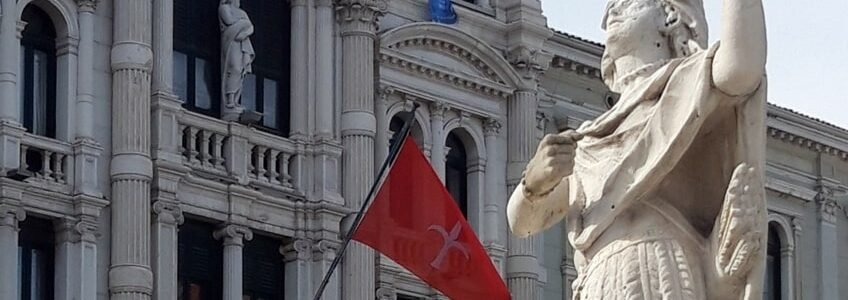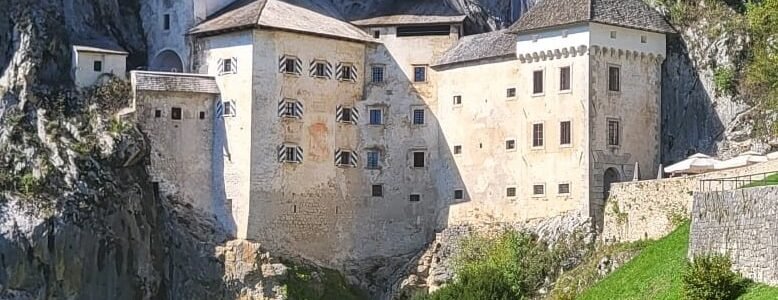Verona City Guide
Verona City Guide
Verona City Guide
What to Expect in Verona
Verona is a compact yet culturally rich city in northern Italy, best known for its Roman amphitheater, medieval old town, and literary fame as the setting of Shakespeare’s “Romeo and Juliet.” It’s a practical choice for a one or two-day itinerary, ideal for travelers interested in history, architecture, and local food culture. Located in the Veneto region and well connected to cities like Milan, Venice, and Ljubljana, Verona is easy to navigate and offers a good balance of attractions and walkable streets.
Getting Oriented: Layout and Main Zones
Verona’s city center is shaped by the Adige River, which curves around the historic core. The main landmarks are all within walking distance. The heart of the city is Piazza Bra, home to the Arena di Verona. To the north lies the shopping district via Mazzini, leading toward Piazza delle Erbe and Piazza dei Signori. Across the river, in the Veronetta district, you’ll find more local and residential areas, the Roman Theater, and scenic viewpoints like Castel San Pietro.
Arena di Verona and Piazza Bra
The Arena is Verona’s most famous monument and one of the best-preserved Roman amphitheaters still in use. Built in the 1st century AD, it hosts operas and concerts from spring to fall. You can walk around the exterior anytime, but entrance to the interior requires a ticket. Piazza Bra, where the Arena is located, is a wide square with restaurants, benches, and green areas – a good place to start your visit.
Juliet’s House and Literary Tourism
Casa di Giulietta (Juliet’s House) is one of the city’s busiest attractions, even though the connection to Shakespeare is entirely fictional. Visitors can stand on the small balcony, see the bronze statue of Juliet, or leave notes in the entrance tunnel. The house also contains a small museum and period furniture. Expect lines and crowds, especially in the afternoon.
Piazza delle Erbe and Surrounding Sights
This square has been the city’s commercial center since Roman times. Today it features cafes, a small daily market, and historical architecture including the frescoed Mazzanti houses and the Torre dei Lamberti. You can climb the tower for a panoramic view of Verona. A short walk away is Piazza dei Signori, quieter and more formal, surrounded by government buildings and statues of figures like Dante Alighieri.
Castelvecchio and the Bridge
West of the old town sits Castelvecchio, a 14th-century fortress that now houses a museum of medieval and Renaissance art. Its adjoining bridge, Ponte Scaligero, offers great views over the river and city skyline. This area is less crowded and gives insight into Verona’s military and aristocratic past. The museum is well curated and usually not overrun with tourists.
Connections Beyond Verona
For those planning multi-city trips, Verona is a convenient stop. Trains connect to Venice, Bologna, Milan, and Florence within 1–2 hours. Those traveling toward Slovenia will find it easy to arrange a smooth transfer to Ljubljana Airport or onward to Lake Bled. This flexibility makes Verona a strong hub for regional travel.
Veronetta and Castel San Pietro
Crossing the river via Ponte Pietra brings you into Veronetta, a more residential and student-friendly area. Climb the stairs (or take the funicular) to Castel San Pietro for sweeping views of the old city and Adige River. Nearby is the Roman Theater, which also has an archaeological museum. This side of the river is ideal for a more local lunch or late afternoon walk.
Local Food and Dining Tips
Verona’s cuisine reflects the broader Veneto region but with local touches. Must-try dishes include risotto all’Amarone (made with local red wine), pastissada de caval (horse meat stew), and gnocchi. Osterias and trattorias around Piazza delle Erbe and in Veronetta offer traditional menus at reasonable prices. Aperitivo is common before dinner – a drink served with snacks like olives, cheese, or small sandwiches. Try a glass of Valpolicella or Soave, both regional wines.
Shopping and Local Products
Beyond fashion brands on via Mazzini, Verona offers many independent shops where you can find locally made leather goods, ceramics, and regional food products. Specialty stores sell Amarone wines, olive oils from nearby Lake Garda, and traditional sweets like pandoro. Markets around Piazza San Zeno also occasionally host artisan stalls, especially on weekends.
Logistics: When to Go, How to Move
Verona can be visited year-round, but spring and early autumn offer the best weather. Summers can be hot, especially during the opera season. The train station (Verona Porta Nuova) is a 20-minute walk or a short taxi ride from the old town. Public transport is available but rarely needed unless you’re staying farther out. The city is pedestrian-friendly, and many streets in the center are closed to cars.
Official Travel Information for Verona
For updated ticket prices, museum hours, and event schedules, consult the official tourism website. They provide downloadable maps, suggested walking routes, and up-to-date access info for all major sights.
Conclusion: Efficient, Varied, Walkable
Verona works well for travelers who want a compact city experience without the crowds of bigger Italian destinations. Everything is close, the infrastructure is clean and reliable, and the mix of Roman, medieval, and Renaissance architecture is balanced rather than overwhelming. You can do a lot in a day, or take two to enjoy it more slowly. Either way, Verona delivers solid value for time spent.
Verona City Guide
Verona City Guide brings you through streets where architecture whispers rather than shouts. Between the arches of Porta Borsari and the shadows of Castelvecchio, there’s a rhythm you walk into without realizing. It’s in the faded reds of the balconies, in the compact calm of courtyards, and in how locals never seem to be in a rush.
For travelers arriving from Slovenia or Hungary, the journey is just long enough to shift your pace — from Alpine crispness to northern Italian ease. Whether you step in through the old town gates or enter via the train station, Verona meets you softly and without demands.
- Ljubljana Airport to Verona — straight into the Veneto
- Ljubljana to Verona by private transfer
- Verona to Zagreb — cross-border route with ease
- From Bled to Verona — lakes to landmarks
- Budapest to Verona direct travel option
- Airport connections for all major cities
Verona City Guide: From Arches to Amphitheaters
- Best explored on foot — distances are short and streets are quiet
- Open-air cafés serve all day along the Adige river
- Morning markets around Piazza delle Erbe
- Sunset from Castel San Pietro is a must
- Most attractions are within a 10-minute walk radius
- Local gelato shops often close late — perfect nightcap
In Verona, Time Doesn’t Push Back
Verona City Guide captures a place where everything slows down
Local maps, opening times, and itinerary suggestions can be found on this trusted regional website.
RECENT POSTS
- How to get from Trieste to Zagreb December 6, 2025
- How to get from Vienna to Venice November 30, 2025
- How to get from Vienna to Trieste November 22, 2025





























































Leave a Comment